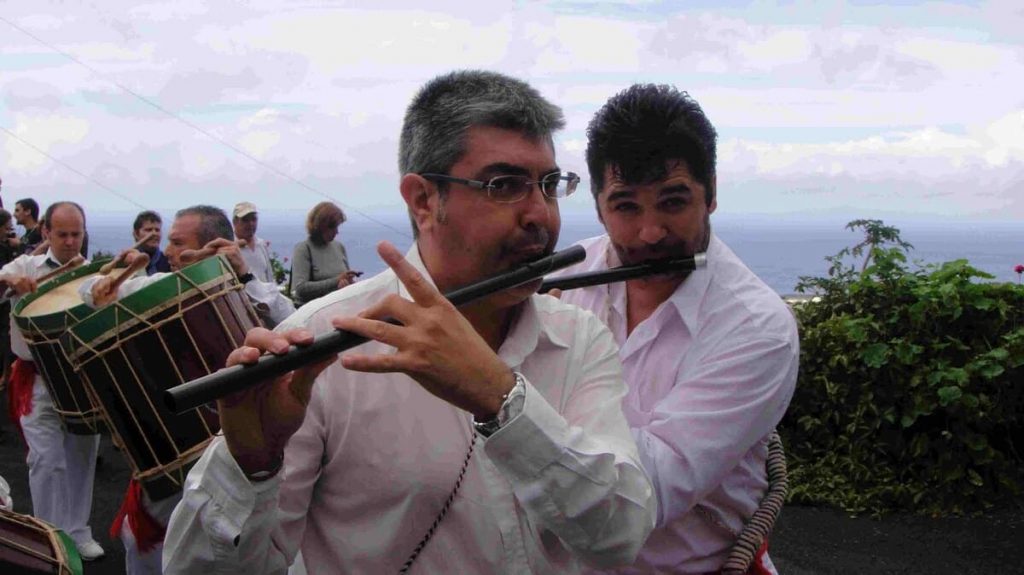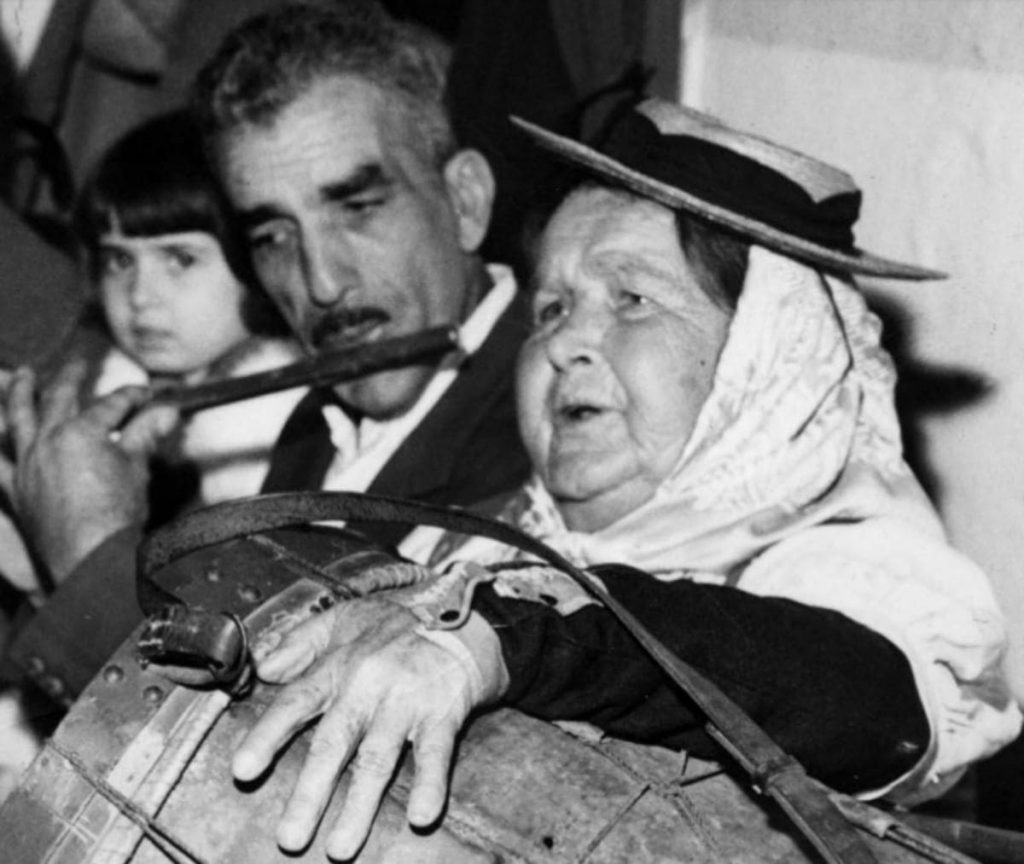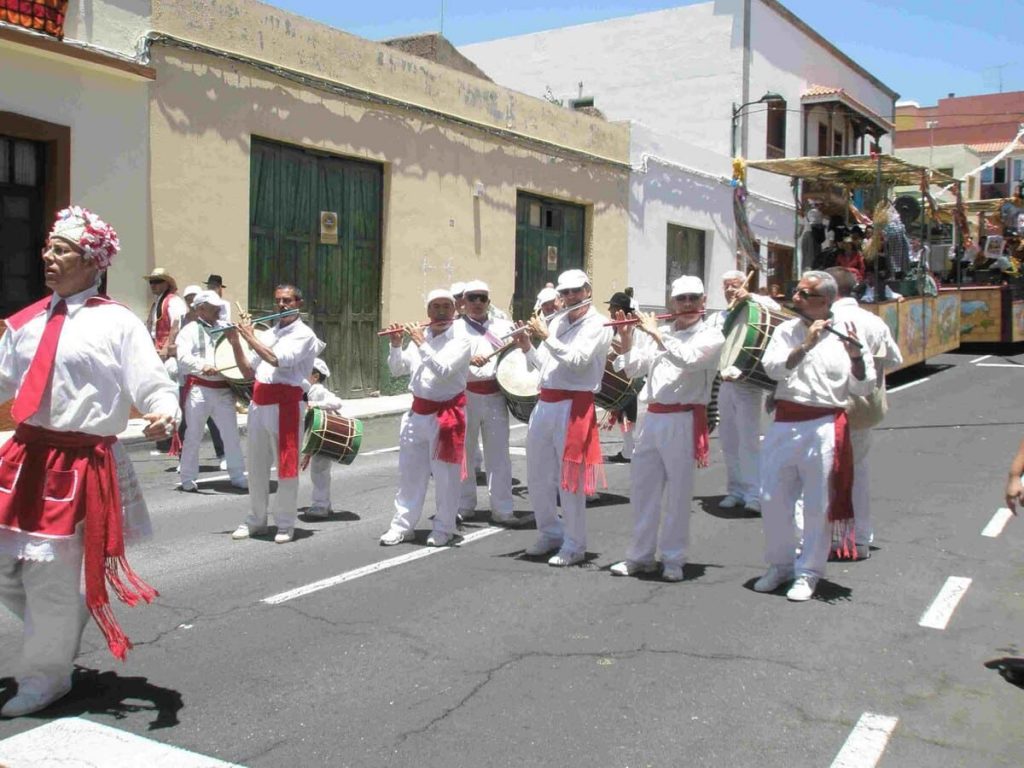The flute or pito herreño is a typical wind instrument of the island of El Hierro. This rustic flute was formerly made of laurel wood, so it was known as "pito de loro". It is transverse and has 6 holes arranged in line and a larger one for the embouchure. It is the typical sound, together with the "chácaras" and the "tambor herreño", of the "Bajada de la Virgen de los Reyes", the most important festivity of the island.

These flutes from El Hierro are called pito because of their resemblance to whistles, especially the first ones, which were smaller and had a very high-pitched sound.
Description of the herreño whistle
It is a fine flute, whose materials, which have been used for its manufacture, have changed with the times. The oldest known was made of wood from lauraceous trees. Later, metals such as copper or aluminum were used, and more recently, plastic. The material influences the type of sound. Wooden ones, for example, have a warmer and louder sound than plastic or metal ones.
In principle the Herreña flute was small but the current ones are larger. It consists of a tube where the six fingering holes are aligned, which are covered and uncovered to produce the different musical notes, and the embouchure, a hole of larger diameter than the rest. At the upper end of this flute, there is a cork stopper in charge of the tuning of the whistle.

The pito herreño is played leaning on the chin and on the thumbs, sideways, with the index, middle and ring fingers of both hands and with the mouth positioned as if it were going to sound the mouthpiece of a bottle. It is difficult to find a pito herreño that produces the sound of a perfect scale because its manufacture is completely handmade.
Manufacture of this instrument
To make a herreño whistle, first, you must choose the material. To begin with, plastic is recommended. You need a tube about 2 centimeters wide and 50 centimeters long. On it a straight line is drawn lengthwise, from one end to the other, and on that line the six holes are made. One at 9 centimeters from one end, which will be the mouth; and six more with a separation of 3 centimeters between one and the other, except between the third and the fourth that is left a separation of 3.8 centimeters.

The characteristic touch of the pito herreño is due to the latter difference in the separation of the holes, which results in a scale that is not completely diatonic. The holes of the fingering holes should measure 7.5 millimeters, while 9 or 10 millimeters is used for the mouthpiece.

Subsequently, the holes are sanded and polished. Then, a cork stopper, also called tuning stopper, is pressed inside the tube, on top of the mouthpiece and with the help of a rod, which is inserted through the tube, the cork is moved to its correct position, about 4 or 5 centimeters from the end. It is important that it is precisely positioned so that the whistle is in tune.
Different types of flutes or whistles from El Hierro
The wooden parrot whistle. It is the oldest known whistle. For its construction parrot wood, lauroceraso or laurel was used. A tree of the rosaceae, from whose leaves a very poisonous water is obtained by distillation. It is believed that wood was used for its manufacture, since there were no tools that allowed the use of other materials.
The sound of this parrot wood whistle is sharper than the ones used nowadays, due to the smaller size, both in length, width and holes.
The copper whistle. Copper pipes were also used for the manufacture of whistles in the past. They were no longer used because these, under the action of the humid air loaded with carbonic acid, were covered with a layer of hydrocarbonate or cardenillo, very poisonous.
The golden metal whistle. This whistle is the last of the classics used by famous dressers. It was endowed with a particular luster, a golden metallic sheen, which, after polishing, used to be displayed by the players at parties. The particularity they had, besides resembling wind musical instruments, was that they sounded sharper, because the diameter of the tube was smaller than the one that prevails today.
The aluminum whistle . Less heavy than the golden metal whistle, but with little acceptance. This is due, perhaps, to the fact that aluminum is a metal whose industrial production is recent and has not had much tradition in El Hierro. Its color and brightness similar to silver, its high sonority, its tenacity and lightness, make it a perfect metal for the manufacture of this instrument.
The black plastic whistle. The plastic is a material of organic or synthetic origin susceptible to be modeled or molded in hot or pressure. The boom of these whistles in the last decade is due, perhaps, to how easy it is to obtain tubes of this type.
If you want to know more about Canarian instruments and craftsmanship, here are some links that may be of interest to you: The legacy of traditional Canarian pottery;Typical Canarian costume, tradition and culture;Timple, know the history of the Canarian instrument.
Paula Vera
Photo credits: Diario de Avisos; Government of the Canary Islands



